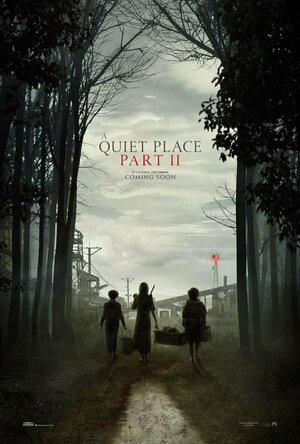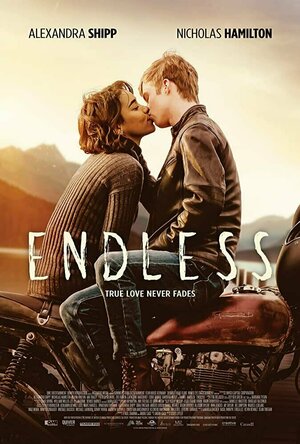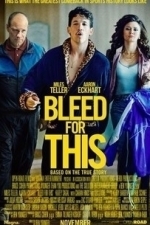Gareth von Kallenbach (980 KP) rated A Quiet Place: Part II (2021) in Movies
May 25, 2021 (Updated May 25, 2021)
As cinemas re-open with growing but limited capacity; the film is set for release and will be a great indicator as to if the public is ready to return to cinemas in significant numbers or will they sit it out and opt to see the film down the line on Paramount+.
The film opens with a look at the day things changed for the world as Lee (John Krasinski); does some shopping while news reports come in of an explosion in Shanghai. Enjoying the weather; he joins his family at a Little League game and talks with his friend Emmett (Cillian Murphy) when the game is interrupted by the appearance of a large fireball in the sky.
As they head home; the city falls under attack by deadly creatures and Lee and his family narrowly escape. The film then jumps forward immediately following the conclusion of the first film and Evelyn (Emily Blunt); attempts to lead her newborn son, daughter Regan ( Millicent Simmons), and son Marcus (Noah Jupe) to a safer locale.
When Marcus is injured along the way; Evelyn takes refuge with Emmett who is not happy to have to care for others after the loss of his wife and despite a secure locale in a foundry; demands the family leave the following day.
When an unexpected radio signal appears; Regan is determined to leave and find the source as she knows the frequency of her Cochlear Implant is a weapon against the creatures and she figures if that can be broadcasted and the information revealed; then humanity has a chance to fight back and win.
What follows is a very gripping and intense story as Regan and Emmett attempt to complete the mission while Evelyn and her family endure all manner of threats as they try to survive.
The film builds upon what made the first film so great in that there are strong and relatable characters and some very tense situations. The screening we attended was so quiet you could tell that audience members were so enthralled that they were afraid to make any noise.
The film ups the action and expands upon the universe without losing any of the strong character-driven elements or relying too much upon CGI to carry the film.
John Krasinski writes, directed, and produced the film, and while he has less screen time than he did in the original; the film is the rare sequel that holds its own and actually improves upon the original.
My only issue with the film was that the ending was rather abrupt and left me with several unanswered questions. While this would be more than fine if we were assured of a third film to resolve unanswered elements; word is that a spin-off is in development so hopefully this will resolve the issues I had or at the least co-exist with a third part of the series.
For now; “A Quiet Place Part II” drives home why we need the cinematic experience as from the large screen to the Dolby Atmos sound; the film is a sensory experience that needs to be enjoyed in a communal setting with maximum sensory input.
The film sets the tension meter to the max and never disappoints and I urge you to experience this film the way it was intended.
4.5 stars out of 5
Bob Mann (459 KP) rated Endless (2020) in Movies
Oct 19, 2020
But fate is about to push them even further apart as - with an advert as to why drinking, texting and driving don't mix - Chris is killed in a car crash. Tragedy - when the feeling's gone and you can't go on! Can their love for each other reach beyond death itself, and if so, at what cost?
We've been here before of course with the Demi Moore / Patrick Swayze hit "Ghost" from 1990. That was an Oscar winner (Best Supporting Actress for Whoopi Goldberg and screenplay by Bruce Joel Rubin). Will "Endless" - a teen-love version - match this potential? Unfortunately, without a potter's wheel in sight, it doesn't stand a ghost of a chance.
It feels like it's not for the want of trying from the five youngsters* at the heart of the action, with Eddie Ramos and Zoë Belkin playing the lover's best friends and DeRon Horton being the limbo-trapped ghost-guide equivalent to the subway dropout from "Ghost". (* I say "youngsters", but most seem to be in their late twenties!) )
All seem to invest their energy into the project. Unfortunately, with the exception of Alexandra Shipp, the energy is not matched with great acting talent. Poor Nicholas Hamilton (the bully from "It") seems to have a particularly limited range, with his resting expression being "gormless".
None of the adult actors fair much better, with Famke Janssen being particularly unconvincing.
As I said, the exception here is Alexandra Shipp, who had a supporting role in "Love, Simon" and a more centre-stage role as "Storm" in the otherwise disappointing "X-Men: Dark Phoenix". Here she remains eminently watchable, but is hog-bound by a seriously dodgy script.
If you read my bob-the-movie-man blog regularly, you will know I reach for my flame-thrower at the appearance of voiceovers. And the start of this movie made me shudder with fear as a "tell, not show" approach was followed. It's a mild blessing that the script - by Andre Case and O'Neil Sharma - used this device purely as a slightly lazy way to set the scene and the voiceover didn't rear its ugly head again.
However, on a broader basis, the screenplay doesn't excite - predictability is its middle name - and it contains lines of dialogue that are absolute stinkers. There are whole sections of the movie that defy belief, with a police investigation in particular appearing completely incompetent. The result is that it adds neither drama or tension.
Through my career in IT I've had the great fortune to travel to a number of small cities in Canada, and all have appealed with their consistently picturesque qualities and consistently quirky individuals! Here we have the cities of Kelowna and Vernon in British Columbia playing California, and the drone cinematography (by Frank Borin and Mark Dobrescu) displays the dramatic lake-filled scenery to the full.
With so many cookie-cutter movies out there, it feels like the non-horror "Ghost" recipe (or "Heaven Can Wait" / "It's a Wonderful Life" / "A Matter of Life and Death" / delete per your preference) is well overdue for a makeover. Unfortunately, director Scott Speer's attempt just isn't good enough to fill the void. And that's a shame.
(For the full graphical review, please check out the bob-the-movie-man review here - https://rb.gy/mzq6jx . Thanks.)
Gareth von Kallenbach (980 KP) rated Bleed For This (2016) in Movies
Jul 12, 2019
After the biggest win of his career when everything appears to be going Vinny, his families and Rooney’s way, there is a terrible car accident and Vinny suffers a broken neck. The doctor tells him that he may never walk again, let alone box. With everyone telling him that his boxing career is over, Vinny is single-mindedly determined to do everything he can to get back into the ring. He opts to not have surgery in hopes that his neck can heal on its own and he can return to champion ship form. He has to convince Rooney to train him, find someone willing to fight him, and has to overcome his once over bearing father being unwilling be in his corner for the first time in his life. Even with a mountain of obstacles in his way, he begins his quest to get back into the ring and show everyone that he can do the impossible and regain his past form.
Writer and Director Ben Younger (Prime and Boiler Room) does an excellent job with this inspirational true story. The supporting cast provide solid performances, especial Eckhart and Hinds, but Miles Teller’s performance is what really makes this a fun film to watch. He really seemed to fit into this role really well. His performance was both compelling and fun. There were several times that the film showed actual old footage and footage just made to look old and you really couldn’t tell if it was Teller or the real Vinny Pazienza on the screen. I liked how the boxing sequences were not over dramatized, no mouth pieces flying across the ring, it looked like there was an effort to just keep them as true to the actual fights as possible. I also enjoyed the moments of comedy. For a story full of drama there was a good amount of well-timed comedy, mostly provided by Teller. Visually they did a good job of making the film feel like you were in late 80s and early 90s. There were a couple of slow scenes but overall the film flowed really well.
Overall this was a well done boxing genre movie. Good story, great acting performances and solid directing.

Subliminal Vision Boards
Lifestyle and Health & Fitness
App
** You get it all! One time fee! NO In-App Purchases and NO Advertisements! ** Congratulations on...

Her - LGBTQ Dating
Dating, Lifestyle and Social Networking
App
Her is the biggest (and best!) app for lesbian, bisexual and queer people worldwide. Surround...

Destiny Map-Numerology Astrology Taro
Lifestyle and Productivity
App
- A NEW section: "How to conquer a man”. Featured by Apple as: “New and Noteworthy”,...

Tabata Stopwatch Pro - Tabata Timer and HIIT Timer
Health & Fitness and Sports
App
Tabata Stopwatch Pro is the ultimate Tabata Interval Timer that works for 'all' your interval...

Strip Designer
Photo & Video and Lifestyle
App
Make your photos come to live and tell a story you can share with friends and family. With Strip...

Tabata Stopwatch Pro - Tabata Timer
Health & Fitness and Sports
App
Tabata Stopwatch Pro is the ultimate Tabata Interval Timer that works for 'all' your interval...

Halifax Mobile Banking
Finance and Business
App
Our Mobile Banking app can do everything you’d expect, maybe a little extra. And you can use it...


